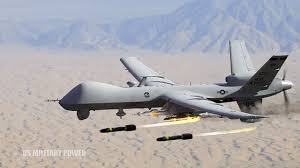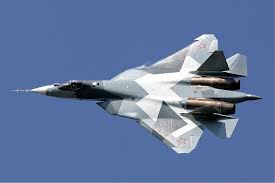CHRIS GRIFFITH TECHNOLOGY REPORTER, JUNE 16, 2020
Killer drones that hover over war zones and autonomously decide when to kill are being rolled out into battle.
Professor of artificial intelligence at the University of NSW, Toby Walsh, said the Turkish-made drones had been deployed along the Syria-Turkey border and were set for use in other countries such as Pakistan.

Professor Walsh was speaking at the 2020 International Conference on Robotics and Automation, held online because of the pandemic.
He said these new age drones differed from conventional military drones that involved a human making the final decision to kill a person. Here, machines used algorithms to initiate a kill.
“These drones are fully autonomous and use AI and other face-recognition software to identify, track and kill people on the ground. This is something that troubles me and many other people greatly,” he said.
Turkey’s fully autonomous “kamikaze” drones had been developed in-house, he said. “A Turkish student who previously worked at MIT went back to Turkey and in a very short amount of time was able to build a number of kamikaze drones.”
A report last week said Russia was planning a global network of autonomous underwater, surface and air drones. Another said China already was selling autonomous killer drones to Saudi Arabia and Pakistan. Yet another this month said the US wanted to develop an AI-powered drone that could replace its more conventional MQ-9 Reaper drone fleet.

Professor Walsh said a similar story applied on water with fully autonomous ships. The US Navy’s first fully autonomous ship had travelled from Hawaii to the Californian coast without human intervention. These vessels could be used for detecting mines and submarines but they could also travel the world carrying nuclear warheads without humans aboard or direct human control.
The US Navy reportedly said a human would always decide whether to use lethal force.
Professor Walsh had similar concerns about Russian autonomous tanks that used sensors during patrols to identify and destroy human targets. In the air, there are reports this month of Russian Su-57 stealth fighters undergoing unmanned testing.

Professor Walsh said fully autonomous drones were a perfect weapon for terrorists. “For a limited amount of money, you can build yourself a hundred or a thousand drones, put them in the back of a truck, launch and fly them into the centre of a city, and cause mayhem that way.
“These lower the barriers to war. We can build weapons that could fall into the hands of bad actors, rogue states and terrorist organisations, and be used to make the world a much more terrible place.”
He said autonomous weapons had a huge potential for use against civilian populations in towns and cities, not just troops and military targets. Additionally, there was the issue of the accuracy of facial recognition software.
Professor Walsh has been leading the charge to have autonomous weapons banned, just as chemical and biological weapons, cluster munitions and blinding lasers have been.
He organised a letter signed by thousands of researchers and a second letter signed by 117 robotics and AI founders. Currently, 30 nations at the UN want a pre-emptive ban on them. Professor Walsh said there were valid uses for AI-powered robotics, such as clearing minefields.
CHRIS GRIFFITH
TECHNOLOGY REPORTER Chris is one of Australia’s most experienced technology reporters, with an involvement in the computer industry spanning almost 50 years. He learned to program in the late 1960s, studied computer science in the… Read more
Powered by WPeMatico

Recent Comments